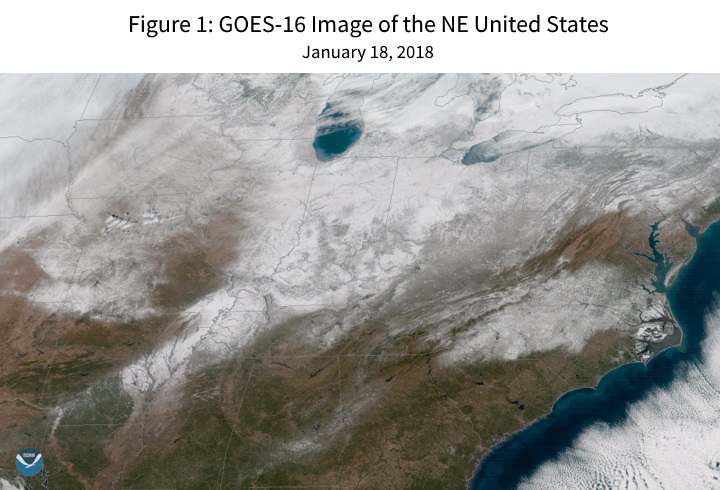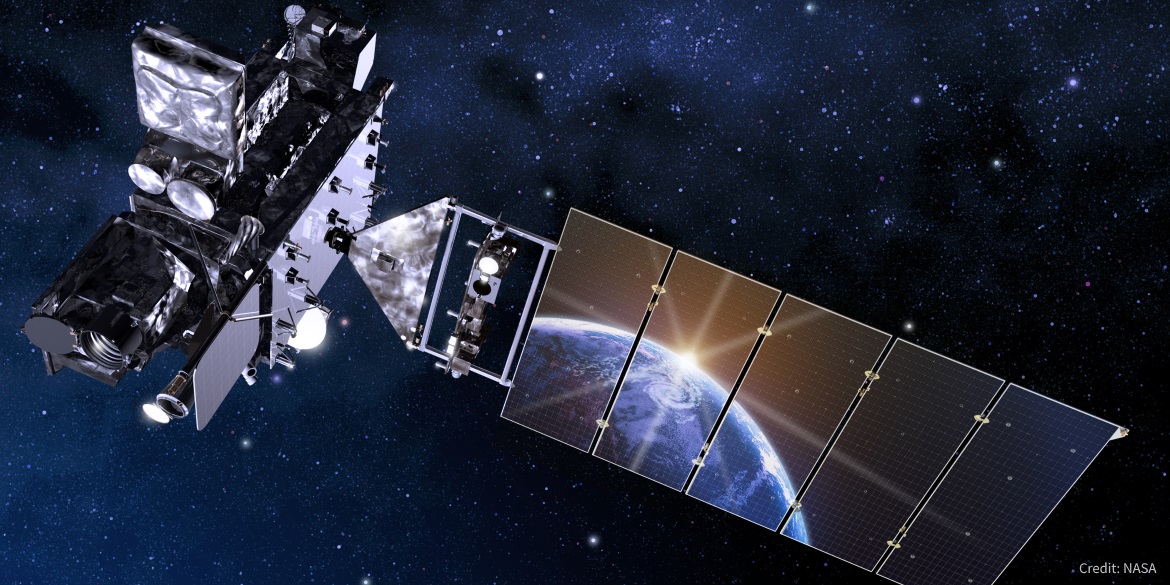The SolarAnywhere® team transforms satellite images into industry-leading solar irradiance data. We make algorithms, not satellites, so when NOAA/NASA upgrades the hardware, we take notice of the possibilities—and get to work.
On January 2, 2018 we made a seamless transition to the new NOAA/NASA GOES-East (Geostationary Operational Environmental Satellite) for real-time and forecast solar irradiance in Eastern North America. Since the GOES-16 satellite has new capabilities and each piece of hardware is unique, we spent much of November and December 2017 calibrating SolarAnywhere values from test images against data from high-quality ground monitoring stations and the GOES-13 satellite it replaces.
The new GOES-East has 16 spectral bands instead of five, and up to four times the resolution (down to 500 meters). Visible light bands produce images like the one in Figure 1 below, which shows a clear January day in the Northeast with recent snow. IR bands already enable our models to distinguish between white clouds and white snow, two very different things for the purposes of solar production. In the future, additional spectral information may be used to better capture aerosols or smoke, for example, from the fires that hung over much of the Western U.S. in 2017.

In addition, the new hardware scans the Continental U.S. 12 times per hour, a threefold increase from the previous generation. The increased temporal resolution can be used to improve cloud motion models and create higher-fidelity and more accurate solar forecasts than ever before.
Utilities and independent system operators (ISOs) in high-penetration PV territories already rely on solar forecasting to help schedule generation. Looking forward, we’re exploring the possibilities for ever higher resolution forecasts, for example as an input to the intelligent energy management system of a single commercial building. We continue to innovate through tech advancements in everything from machine learning, GPUs for processing and new satellites, as well as partnerships with forward-thinking companies and research organizations.
For the moment, our historical data is unchanged by the new satellite—obviously it will be years before images from the new satellite make up a significant portion of the archive. However, paid license subscribers to the SolarAnywhere Data or SystemCheck® APIs now have access to V3.2 time-series data up to real-time, current hour, reflecting our commitment to provide our users with the most accurate and up-to-date information possible.
Register for a free account to give SolarAnywhere a try!
